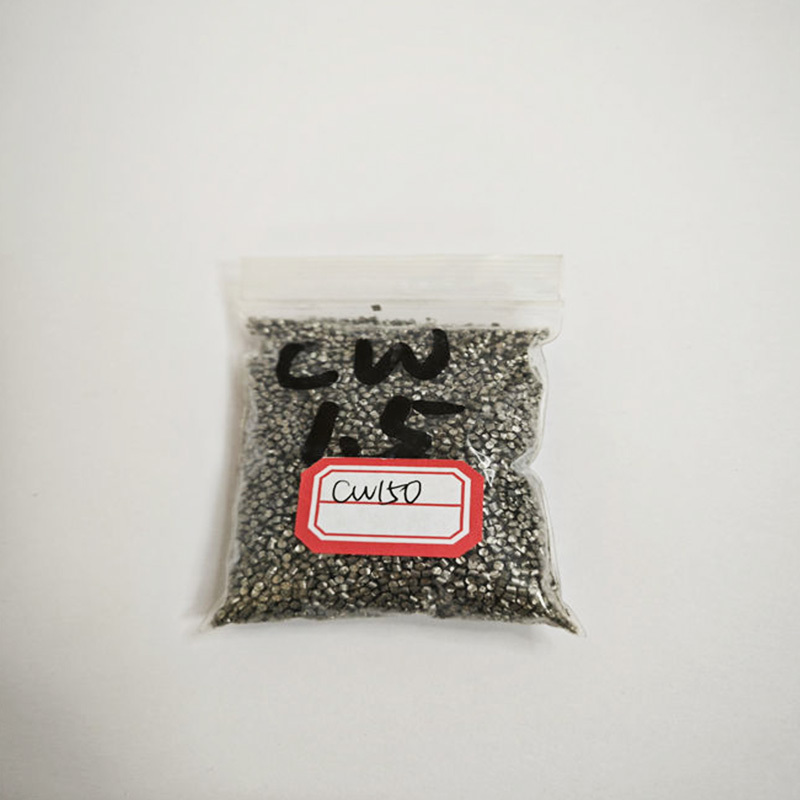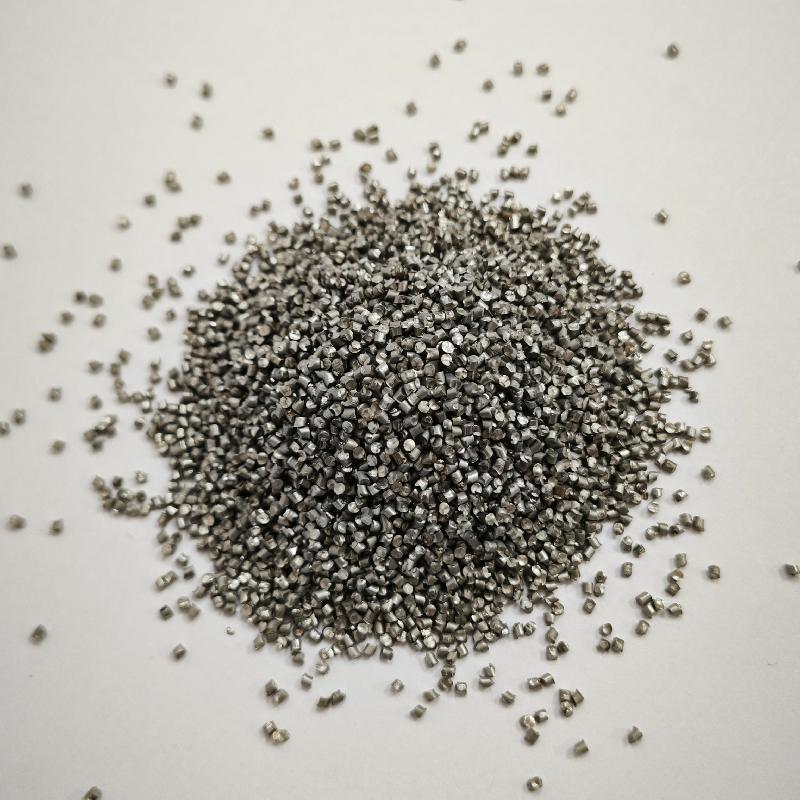The Impact of Shot Blasting on Surface Finishing Quality: A Comprehensive Guide
Release time:
2025-06-21
The Impact of Shot Blasting on Surface Finishing Quality Table of Contents 1. Introduction to Shot Blasting 2. Understanding Surface Finishing Quality 3. How Shot Blasting Works 4. Benefits of Shot Blasting in Surface Finishing 5. Applications of Shot Blasting Across Industries 6. Best Practices for Shot Blasting 7. Common Misconceptions About Shot Blasting 8. The
The Impact of Shot Blasting on Surface Finishing Quality
Table of Contents
- 1. Introduction to Shot Blasting
- 2. Understanding Surface Finishing Quality
- 3. How Shot Blasting Works
- 4. Benefits of Shot Blasting in Surface Finishing
- 5. Applications of Shot Blasting Across Industries
- 6. Best Practices for Shot Blasting
- 7. Common Misconceptions About Shot Blasting
- 8. The Future of Shot Blasting Technology
- 9. Frequently Asked Questions
- 10. Conclusion
1. Introduction to Shot Blasting
Shot blasting is a surface preparation technique that involves propelling abrasive materials, or "shots," at high velocities against a surface. This process creates a uniform surface finish, removes contaminants, and enhances adhesion for coatings and paints. Industries ranging from aerospace to automotive rely on shot blasting to achieve the highest quality surface finishes.
2. Understanding Surface Finishing Quality
Surface finishing quality refers to the characteristics of a surface after it has undergone treatment. Key factors include:
- **Surface Roughness:** The texture of the surface, often measured in micrometers.
- **Adhesion Strength:** The ability of coatings to adhere to the substrate.
- **Visual Appeal:** Aesthetic aspects such as color and gloss.
- **Durability:** Resistance to wear, corrosion, and other environmental factors.
Achieving optimal surface finishing quality is crucial for product performance and longevity. Shot blasting plays a vital role in achieving these characteristics.
3. How Shot Blasting Works
The shot blasting process involves several components:
- **Abrasive Material:** Common materials include steel shots, glass beads, and aluminum oxide. The choice of material affects the finish and performance.
- **Blasting Equipment:** Machines vary from manual units to automated systems, designed to propel the abrasive at high speeds.
- **Operator Technique:** The method and angle of application are critical to achieving consistent results.
The process begins with loading the abrasive into the machine, followed by adjusting the parameters such as pressure and angle. As the machine operates, the abrasive is projected onto the surface, effectively removing contaminants and creating a smooth finish.
4. Benefits of Shot Blasting in Surface Finishing
Shot blasting offers numerous advantages, including:
- **Enhanced Surface Preparation:** Prepares surfaces for painting or coating by removing rust, scale, and contaminants.
- **Improved Adhesion:** Increases the surface area and enhances the bonding strength of coatings.
- **Consistent Finishing:** Produces a uniform surface finish, free from imperfections.
- **Time Efficiency:** Reduces the time required for surface preparation compared to traditional methods like sanding or grinding.
These benefits make shot blasting an essential process in achieving high-quality surface finishes across various applications.
5. Applications of Shot Blasting Across Industries
Shot blasting is utilized in numerous sectors, including:
- **Aerospace:** Prepares components for painting and improves fatigue resistance.
- **Automotive:** Enhances the durability of parts and creates aesthetically pleasing finishes.
- **Construction:** Cleans and prepares surfaces for structural elements, ensuring better adhesion for protective coatings.
- **Metal Fabrication:** Ensures surface cleanliness and prepares metals for further processing.
The versatility of shot blasting allows it to be tailored for specific industry needs, making it a preferred choice for surface finishing.
6. Best Practices for Shot Blasting
To achieve optimal results with shot blasting, consider the following best practices:
- **Select the Right Abrasive:** Choose an abrasive that matches the substrate material and desired finish.
- **Maintain Equipment:** Regular maintenance and calibration of blasting machines ensure consistent performance.
- **Monitor Environmental Conditions:** Be aware of humidity and temperature, as they can affect the blasting process.
- **Train Operators:** Proper training ensures that operators use equipment effectively and safely.
Implementing these practices can significantly enhance the effectiveness of shot blasting in achieving desired surface finishing quality.
7. Common Misconceptions About Shot Blasting
Despite its advantages, several misconceptions surround shot blasting:
- **It Damages Surfaces:** When executed correctly, shot blasting enhances rather than damages surfaces.
- **It’s Only for Metal:** While primarily used on metal, shot blasting can also be effective on concrete and other materials.
- **It’s an Outdated Process:** Advancements in technology have made shot blasting more efficient and versatile.
Understanding these misconceptions can help industry professionals make informed decisions regarding surface finishing techniques.
8. The Future of Shot Blasting Technology
As industries evolve, so does shot blasting technology. Expected advancements include:
- **Automation:** Increased use of automated systems to improve efficiency and reduce labor costs.
- **Environmentally Friendly Abrasives:** Development of sustainable abrasive materials to reduce environmental impact.
- **Innovative Equipment Designs:** Enhanced machine designs that improve effectiveness and user safety.
These advancements will further solidify shot blasting's position as a leading surface finishing technique.
9. Frequently Asked Questions
What types of materials can be shot blasted?
Shot blasting can be used on a variety of materials, including metals, concrete, and some plastics.
How does shot blasting differ from sandblasting?
While both processes involve propelling abrasive materials, shot blasting typically uses round abrasives and operates at higher speeds, leading to a more uniform finish.
Is shot blasting environmentally friendly?
Yes, when proper practices are followed, including the use of recyclable abrasives and dust collection systems, shot blasting can be environmentally friendly.
How does shot blasting improve adhesion for coatings?
By creating a rougher surface profile, shot blasting enhances the mechanical bonding of coatings to the substrate.
What safety measures should be taken during shot blasting?
Operators should wear appropriate personal protective equipment (PPE), ensure proper ventilation, and follow all safety guidelines related to equipment use.
10. Conclusion
The impact of shot blasting on surface finishing quality cannot be overstated. This powerful technique not only enhances the aesthetic appeal of surfaces but also improves their durability and performance. By understanding the principles of shot blasting, its benefits, and best practices, professionals can harness its potential to achieve superior finishing results. As technology advances, shot blasting will continue to play a pivotal role in surface preparation across various industries, ensuring high-quality outcomes and customer satisfaction.
News
The Impact of Shot Blasting on Surface Finishing Quality: A Comprehensive Guide
The Impact of Shot Blasting on Surface Finishing Quality Table of Contents 1. Introduction to Shot Blasting 2. Understanding Surface Finishing Quality 3. How Shot Blasting Works 4. Benefits of Shot Blasting in Surface Finishing 5. Applications of Shot Blasting Across Industries 6. Best Practices for Shot Blasting 7. Common Misconceptions About Shot Blasting 8. The
Exploring the Efficiency of Steel Cut Wire Shot in Industrial Applications
Exploring the Efficiency of Steel Cut Wire Shot in Industrial Applications Table of Contents Introduction to Steel Cut Wire Shot Benefits of Using Steel Cut Wire Shot Applications of Steel Cut Wire Shot in Industry Efficiency Factors in Steel Cut Wire Shot Composition and Manufacturing Process Selecting the Right Steel Cut Wire Shot Environmental Impact and Sustainabil
The Benefits and Applications of Shot Blasting with Steel Shot
Shot blasting with steel shot is a crucial process in various industrial applications, especially in the metalworking and manufacturing sectors. This method involves propelling small steel balls at high velocities onto a surface to remove contaminants, prepare surfaces for further treatment, and improve the overall quality of the material. Understanding the benefits and applications of shot blasti
The Science Behind Stainless Steel Shot Abrasion Techniques: A Comprehensive Guide
The Science Behind Stainless Steel Shot Abrasion Techniques Table of Contents 1. Introduction to Stainless Steel Shot Abrasion 2. Understanding the Basics of Abrasive Techniques 3. The Role of Stainless Steel Shots in Abrasion 3.1 Definition and Composition of Stainless Steel Shots 3.2 Types of Stainless Steel Shots 4. Mechanism of Stainless Steel Shot Abrasion 4.1 Process Overview 4.2 Key Paramet
Understanding Steel Shots for Shot Blasting Machines: A Comprehensive Guide
Steel shots are critical materials used in shot blasting machines, a process vital for surface preparation and cleaning in various industrial applications. These small spherical pellets, made of high-quality steel, are designed to impact surfaces at high velocities, which helps to remove contaminants, rust, and old paints while also improving the surface profile for better adhesion of coatings. On
The Ultimate Guide to Shot Blasting Concrete: Techniques and Tips for a Flawless Finish
The Ultimate Guide to Shot Blasting Concrete: Techniques and Tips for a Flawless Finish Table of Contents 1. Introduction to Shot Blasting Concrete 2. Understanding the Shot Blasting Process 3. Essential Equipment for Shot Blasting 3.1 Types of Shot Blasting Machines 3.2 Protective Gear and Safety Equipment 4. Preparing the Concrete Surface 4.1 Cleaning the Area 4.2 Assessing Surface Conditions 5.








